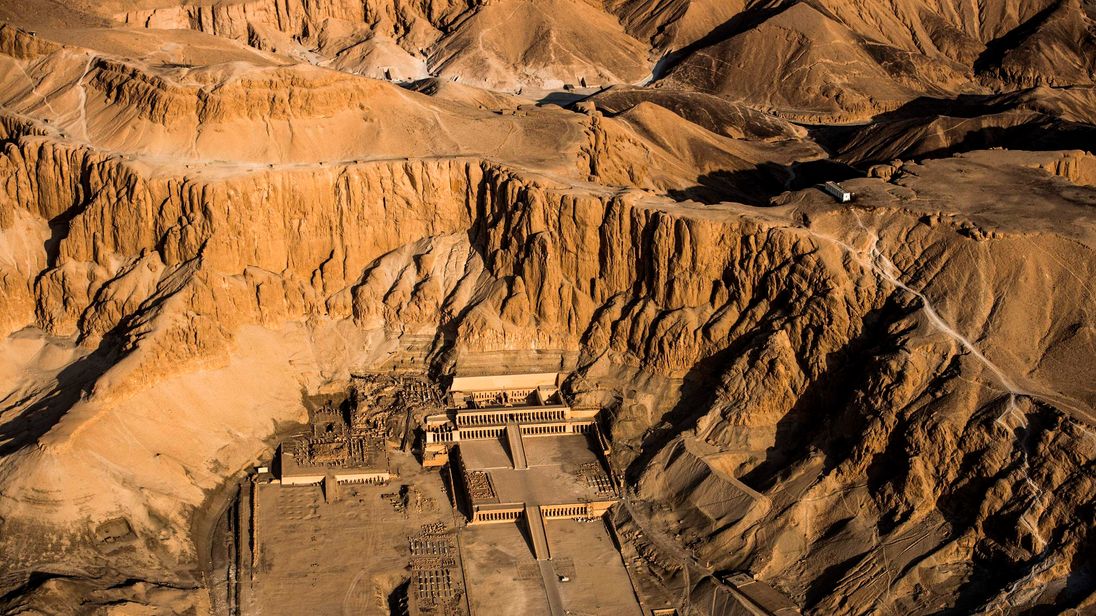According to Egypt's antiquities ministry, the mummy was found in one of two tombs which are being explored for the first time since being found twenty years ago.
The tombs, which are located just across the Nile from Luxor, were found by German archaeologist Frederica Kampp in the 1990s.
They are believed to date back to the ancient Egyptian dynasties of the New Kingdom, which lasted from 1,550-1,070 BC.
Authorities are exploring the tombs as Egypt attempts to encourage tourists to visit its ancient sites.
Antiquities Minister Khaled al Enany announced the discovery in Luxor, near to the Temple of Hatshepsut and the Valley of the Kings, where Tutankhamun was buried.
"It's truly an exceptional day," he said.
"The 18th dynasty private tombs were already known. But it's the first time to enter inside the two tombs."
The antiquities ministry said archaeologists found "a mummy wrapped in linen" which studies suggested "could be for a top official or a powerful person".
It added that it believed the mummy could be of "a person named Djehuty Mes whose name was engraved on one of the walls".
Alternately, it could belong to "the scribe Maati, as his name and the name of his wife Mehi were inscribed on 50 funerary cones found in the tomb's rectangular chamber".
Only one of the two tombs was excavated.
The ministry said: "The tomb has a court lined with stone and mud-brick walls. It has a six-metre deep burial shaft at its southern side that lead to four side chambers."
"Studies reveal that the tomb was reused in antiquity," the ministry added.
The explored tomb contained a depiction of "a person, probably the deceased's brother, presenting offerings and flowers to the deceased and his wife" according to the ministry.

